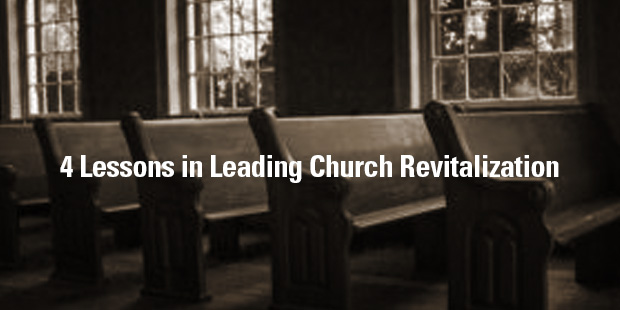
4 Lessons in Leading Church Revitalization
I fell in love with church revitalization early in my ministry when I served a church of senior adults during a brief stint teaching at a seminary.
The median age of the people was 68. It seemed like there was an oxygen tank or a walker at the end of most pews.
They came to me and said, “Dr. Stetzer, help us reach the young people.”
Leading a church in revitalization has taught me some invaluable lessons. While the process is often difficult and slow moving, if approached correctly it can reinvigorate and empower God’s people to produce lasting fruit.
You Will Meet Resistance
Leadership, especially with church revitalization, is a long and slow labor of love in the face of resistance. Not every member will be on your side during revitalization.
If you want everyone to love you, go sell ice cream, don’t revitalize churches.
No matter how difficult, look past the resistance remembering that revitalization is like basic physics.
Momentum results from movement against the inertia.
Love Your People
In revitalization, you need to love, not drive people. Talk to them. Listen to them. Get them excited about God’s mission for their life and their church. Love your people, and not just as a means of getting them to do what you want.
I’ve led a few churches through revitalization and found that, in each case, when we took the time to love one another, people became excited and were more ready to go on mission.
They wanted to love their neighbors and engage the community around them.
Messy Happens
Any disconnected church that seeks to re-engage with their community will find the experience to be messy.
There may be physical messes like mud on the carpet, smudges on the walls, dirty bathrooms, or broken vases. The way of church life to which your people had grown accustomed will suddenly change.
But, there are also relational messes—things changing that some do not want to change.
In revitalization, it’s hard to transition to a missional mindset. Kids will break things. Life will change.
But in the end, it’s worth it all.
Changed Churches
Church revitalization is an opportunity to lead God’s people to a renewed focus on God’s mission. Such an endeavor will undoubtedly change lives, communities, and have a gospel impact on generations to come.
In that first experience, I fell in love with church revitalization. The church recalibrated its sense of mission and reengaged in the growingly diverse community.
I also learned that strong leadership was not driving but loving and empowering my people to make the necessary decisions to live on mission in their community.
The fact is we need a mass movement of revitalization across our context. When we do, the mission force will engage the mission field and churches will be refocused on their mission.
Connect with an Auxano Navigator to learn more about revitalizing your church.













